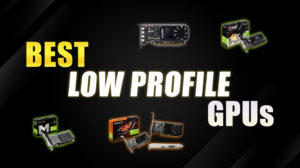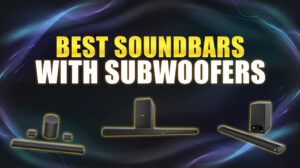Best Flight Simulator Setup Guide for 2025: Tuned for Immersion
Eneba Hub contains affiliate links, which means we may earn a small commission if you make a purchase through them—at no extra cost to you. Learn more


Recent update
This list is regularly updated to match what’s trending and in-demand among gamers.
A flight simulator setup is the closest you’ll get to flying without a license. Every switch, yoke, and monitor placement matters. Get it right, and you’re not playing a game – you’re flying.
Flight sim gear has evolved fast. Today’s hardware mirrors real aircraft systems with precision, and software like MSFS delivers the fidelity to match. What used to need a full rig and a fat wallet now runs on a single PC with smart peripherals.
I’ve built enough flight rigs to know what works. I’ll walk you through the gear, the setup, and the upgrades that make every flight hit different. Strap in. It’s time to build something that flies right.
Jump to:
Essential Components for the Best Flight Simulator Setup
You’ll need a few core components to achieve a basic but functional flight simulator setup. These form the foundation of your sim experience and are essential for even the most budget-friendly builds. At minimum, you’ll need a:
- Flight simulation software (most commonly Microsoft Flight Simulator)
- A capable computer (PC)
- Display (monitor or VR headset)
- Primary flight controls (joystick, control pad, or yoke)
Once those essentials are covered, you’re ready to take off. But for those looking for a fully immersive experience, you will require some additional hardware to help you feel like you’re truly in the cockpit. Below, I provide a breakdown of everything you’ll need to make that pilot fantasy come true and why each component matters.
1. Choose Your Flight Simulator Software
Your flight simulation software is the foundation of the experience, shaping everything from realism and physics to visuals and supported hardware. Choosing the correct sim depends on your goals—whether you’re a beginner, a modder, or an aspiring pilot.
Each of the major platforms offers distinct strengths. Some focus on pushing graphical boundaries and offering the most realistic flying experience possible, while others are more focused on modularity and accessibility. Which flight simulator is best for you will depend on your needs and the capability of your gaming rig.
Below are our top software picks, ranked by key benefits and ideal users.
Microsoft Flight Simulator [Best Overall Choice for Serious Sim Pilots]
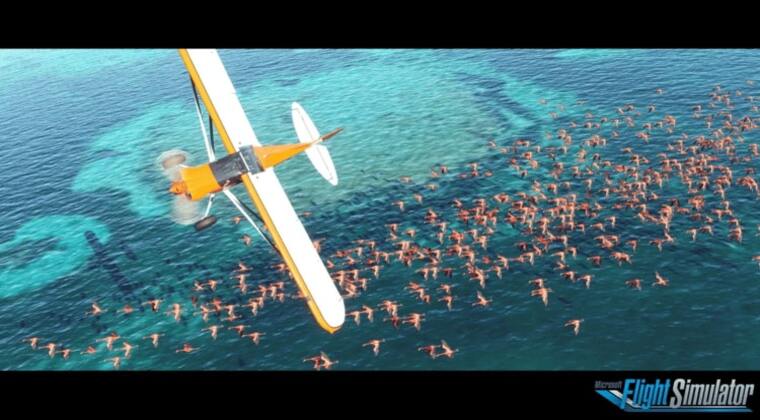
MSFS 2020 set the bar: real-world data, live weather, aircraft that behave. MSFS 2024 takes that baseline and tightens everything with better performance, deeper activities, and the same globe-spanning playground. This is still the platform to build a cockpit around.
And the world keeps getting sharper. World Update 20: Japan drops new photogrammetry cities (Tokyo, Osaka, Kyoto, Sapporo), 60+ landmarks, and five handcrafted airports (free for owners of MSFS 2020 and 2024).
Expect more than pretty screenshots: discovery flights, landing challenges, a bush trip, even event content – all tuned for both versions. If you’re building a home rig, this is the sim that rewards every upgrade you make.
X-Plane 12 [Most Customizable Flight Simulator Experience]
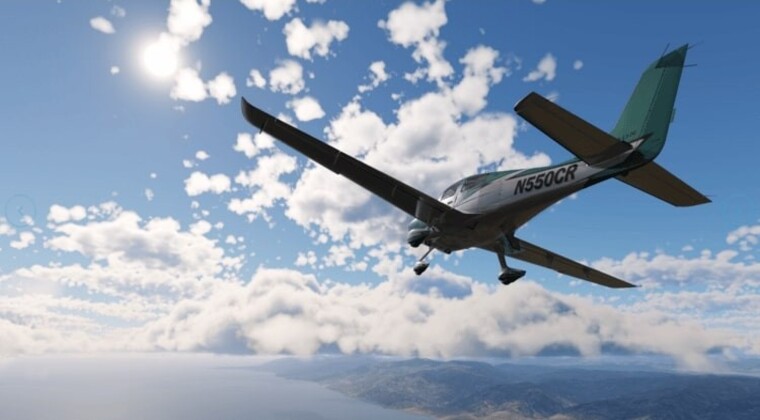
X-Plane 12 isn’t here to hold your hand. It’s the sim for pilots who tweak, calibrate, and rebuild until everything feels just right. The flight model is brutally accurate, and every control input translates into something that actually matters in the air.
It’s also the most open sandbox in the game. You can mod every inch of it – aircraft, weather, lighting, physics, avionics, even the sky texture if you’re picky. The community moves fast, and half the fun is digging through new plugins to see how far you can push the realism.If you like control, this is your playground. X-Plane 12 rewards obsession and precision – the more you put in, the more it gives back.
FlightGear [Free/Open Source Simulator]
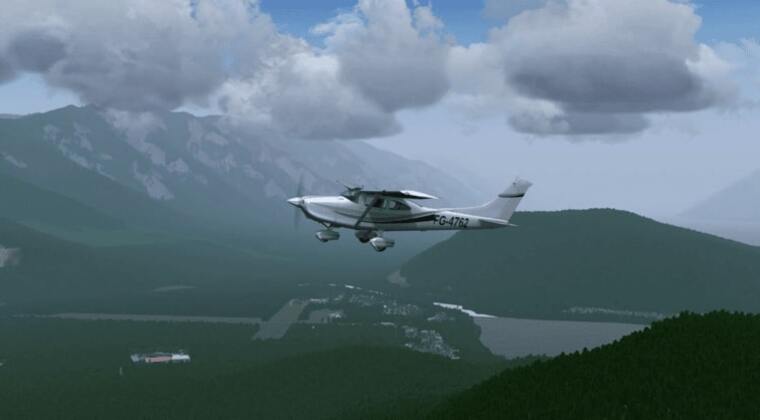
FlightGear’s the one you grab when you want freedom, not flash. It’s completely free, open source, and built by a community that actually flies, tweaks, and shares what they build. If you want a plug-and-play sim, you’re in the wrong place. This is a full sandbox for people who like getting their hands dirty.
Students use it to study real flight dynamics. Hobbyists turn it into custom cockpits. Budget builders love it because it runs on practically anything and still delivers real physics. You can dig into systems, edit aircraft, script weather, or just learn how flying really works.No price tag, no restrictions – just pure experimentation. If you want to understand flight, not just simulate it, FlightGear’s where you start.
Aerofly FS 4 [Best for Beginners and Casual Pilots]
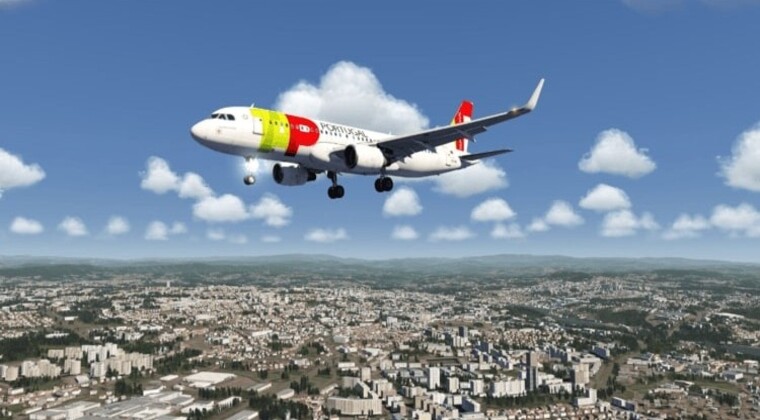
Aerofly FS 4 doesn’t try to overwhelm you with checklists and deep menus – it just gets you flying. Smooth performance, quick loads, and responsive controls make it one of the easiest sims to jump into and actually enjoy.
It looks good, too. Short hops and sightseeing runs feel great with sharp cockpits, clean lighting, and realistic terrain. You can start on keyboard and mouse, then plug in gear later without breaking the flow.Perfect for new simmers, casual flyers, or anyone who wants a relaxed session without fighting the setup. Aerofly FS 4 keeps it light, fast, and fun.
2. Choose Your Dedicated PC
A home simulator setup is only as good as the computer system powering it. Flight sims are some of the most demanding programs in PC gaming, so you’ll need a machine that can handle complex weather systems, global terrain data, and high-fidelity aircraft models.
For casual flyers, a modest build can get the job done. But for VR, ultrawide monitors, or ultra settings, you’ll want the best gaming PC you can afford to ensure smooth, stutter-free performance.
| Category | Minimum Specs (Basic Performance) | Recommended Specs (High Settings/VR) |
| CPU | Intel i5-8400/AMD Ryzen 5 1500X | Intel i7-9800X/AMD Ryzen 7 Pro 2700X |
| GPU | NVIDIA GTX 970/AMD RX 590 | NVIDIA RTX 2080/AMD Radeon VII |
| RAM | 16 GB | 32 GB DDR4 |
| Storage | 150 GB | 150 GB SSD |
| Cooling | Basic cooling setup | Mid-to-high-end cooling setup |
| OS | Windows 11 64-bit | Windows 11 64-bit |
Investing in a high-quality gaming PC is essential if you want smoother frame rates, faster load times, and visual clarity during landings. Even if you can hit mid-high settings with the recommended specs listed above, there is always room for improvement when it comes to PC gaming rigs.
Below, I’ve listed the best pre-built PCs to get you ready for take-off. Starting with ones that will hit the minimum requirements on a budget, all the way up to the super high-end machines that will allow you to turn all the settings up to the max, to give you that truly photorealistic experience.
Another strong option is to build your PC from the ground up. You can use PCPartPicker to design your own custom flight sim build—perfect for balancing price, power, and personalization. This will let you tweak your desired setup with the help of professionals to ensure you get the exact PC that suits your personal needs.
Skytech Blaze 4 Mini [Compact Mid-Range Rig]

The Blaze 4 Mini packs serious muscle. Its Ryzen 7 processor and RTX 4060 GPU deliver clean performance at 1080p and 1440p, even with demanding sims like Microsoft Flight Simulator or DCS.
Fast 1 TB SSD storage, 16 GB DDR4 RAM, and Windows 11 Home keep it snappy and stable. It runs quiet, stays cool, and fits neatly on any desk setup. Perfect for simmers who want power without the bulk or price creep.
Alienware Aurora ACT1250 [Next-Gen Flight Rig]

The Aurora ACT1250 is built for serious simmers. Its Intel Core Ultra 7 and RTX 5060 Ti combo keeps frame rates steady across dense weather, airports, and live-traffic sessions in Microsoft Flight Simulator. DDR5 memory and a 1 TB SSD make loading times almost disappear.
The air-cooled chassis stays quiet, and the clear panel shows off Dell’s clean internal layout. With a 500 W platinum-rated PSU and seven USB 3.0 ports, there’s room for every yoke, pedal, and touchscreen you can throw at it.
Alienware Aurora R16 2025 [Elite Flight Simulator Build]
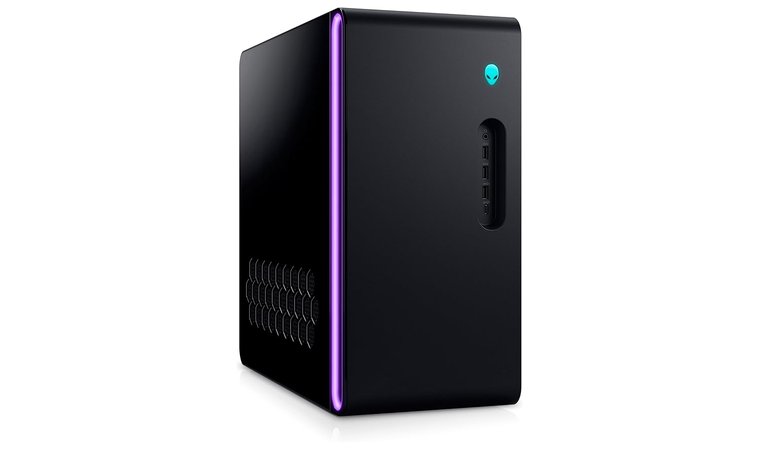
This is the dream rig for sim pilots who want no compromises. The Aurora R16’s Intel Ultra 9 285K and RTX 5080 (16 GB GDDR7) combo chews through ultra settings in Microsoft Flight Simulator and still has headroom for VR, streaming, or multitasking.
A massive 8 TB SSD and 64 GB DDR5 RAM keep everything instant – loading airports, photogrammetry cities, or weather data happens in seconds. The 240 mm liquid cooling keeps it quiet even under long-haul sessions, while the 1000 W Platinum PSU means total stability.
Topped off with Wi-Fi 7 and customizable RGB lighting, this is a cockpit centerpiece built to last.
3. Select Your Primary Flight Controls
No flight simulator setup is complete without reliable flight simulator controls. These input devices translate your real-world movements into virtual flight, offering far more realism than a mouse and keyboard ever could.
Depending on your flying style and budget, there are several types of flight simulator controls to choose from. Whether you’re aiming for general aviation, airliners, or fighter jets, having the right gear—joystick, yoke, throttle, or rudder pedals—makes all the difference.
Each new component can add to the immersion of your experience, both in terms of feel and gameplay. There may be one or two things you should prioritise to get you going, like a simple joystick. But with each element you add, you will slowly start to build your cockpit in your own home.
Thrustmaster T-Flight Hotas X [Best Budget Stick for Beginners]
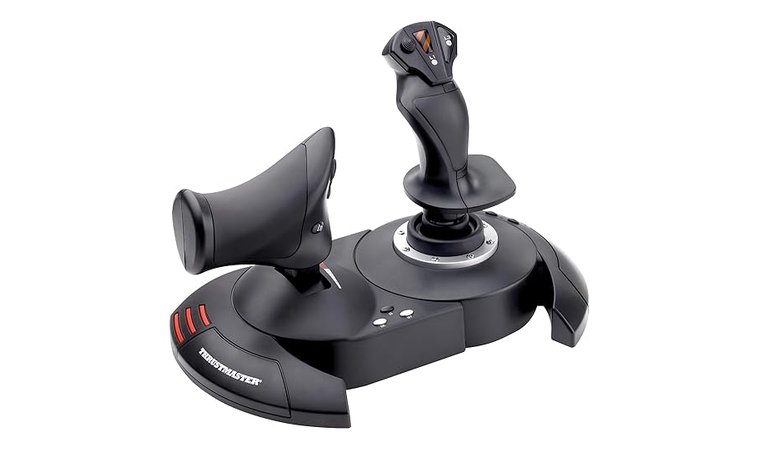
The T-Flight Hotas X keeps things simple, sturdy, and surprisingly fun. It’s plug-and-play on PC, so you’ll be flying in minutes instead of digging through setup menus. The detachable throttle, adjustable resistance, and wide hand rest make long sessions comfortable even for new pilots.
You get 12 programmable buttons, dual control systems, and internal memory to save your layouts – handy if you switch between aircraft or sims. It’s not high-end gear, but for casual pilots, students, or anyone building a starter setup, it’s one of the best-value sticks around.
Thrustmaster TCA Officer Pack Airbus Edition [Best Mid-Range HOTAS for Flight Sim Pros]

This high-quality HOTAS system replicates real Airbus controls with smooth throttle levers and responsive stick inputs. It’s a great mid-range option for users who want immersive two-handed control for both airliners and small aircraft.
Honeycomb Alpha Yoke + Bravo Throttle Quadrant [Most Realistic Dual-Setup for Home Cockpits]
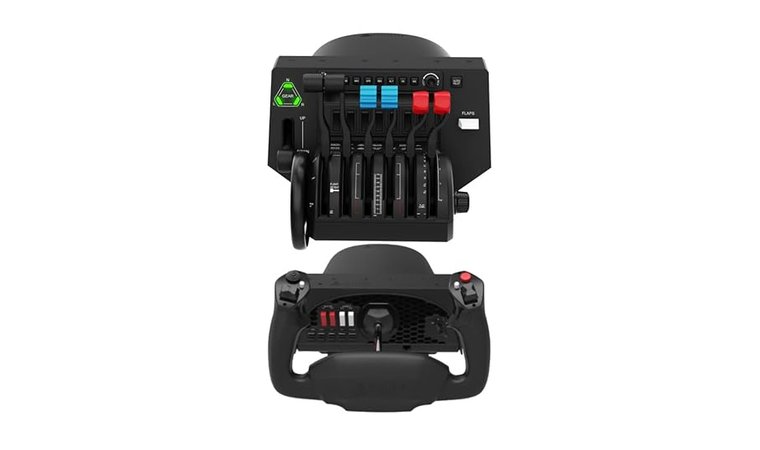
One of the best full-flight control sets on the market, the Honeycomb Alpha and Bravo combo offers professional-grade feel and customization that offers you precise control. It’s ideal for users building a serious cockpit environment and prioritizing realism.
Thrustmaster TFRP [Best Entry-Level Rudder Setup for Flight Sims]
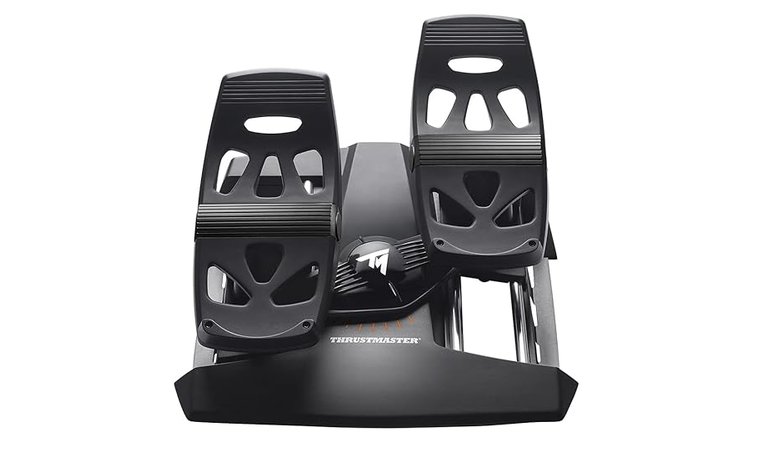
These compact and affordable pedals add precise yaw control and are essential for realistic taxiing and coordinated turns, perfect for slight training. Their adjustable resistance and wide compatibility make them a solid starting point for sim pilots.
4. Establish Your Station
Building the physical environment for your simulator is just as important as choosing your software and controls. A proper station enhances immersion, comfort, and long-term usability, especially during extended flight time.
From ergonomic chairs to sturdy mounts and full rig frameworks, your station should reflect your available space and simulation goals. Whether you’re looking for flexible upgrades or complete cockpit immersion, many high-quality gaming setup ideas exist for you to explore.
RESPAWN 900 Racing Style Reclining [Best Budget Sim Seat for Comfort]
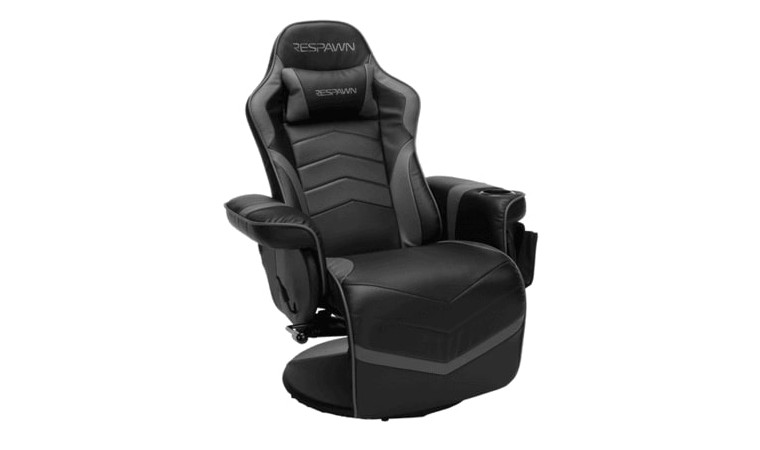
This reclining chair blends gaming ergonomics with sim-friendly features like a built-in footrest and plush arm support. It offers long-session comfort at a reasonable price, making it a solid base for home cockpits.
Next Level Racing Wheel Stand [Best Foldable Base for Compact Rigs]

Designed primarily for racing but perfectly adaptable for flight controls, this mount offers stability and adjustability. It helps prevent your controls from shifting mid-flight and supports yokes, throttles, and joysticks alike.
Marada Modular Cockpit [Best Budget Frame for Flight & Racing]

This is the sweet spot between affordability and immersion. Built from thick steel tubing with a solid column design, it stays rock-steady through long flight sessions or aggressive racing turns – no flex, no wobble, no cheap feel.
Everything adjusts: seat angle, pedal height, shifter mount, frame length. You can dial in your position for a proper flight sim setup or swap over to racing in minutes. It plays nice with Logitech, Thrustmaster, and Honeycomb gear, so compatibility’s a non-issue.
For builders on a budget who still want that “real cockpit” feel, this frame delivers way more than its price suggests.
5. Enhance Audio and Visual Immersion
Once you’ve sorted out your flight controls and cockpit space, the next step is to enhance your audio and visual immersion. Your visual and auditory setup makes a huge difference, whether it’s a high-resolution VR headset, an ultrawide monitor, or a set of high-quality gaming speakers. A more lifelike sensory experience can transform a standard flight into something truly cinematic and unforgettable.
Using a gaming microphone is also essential for those planning to utilize in-sim ATC or start flying online. Pairing that with a gaming headset will take that immersive feeling to the next level by making you feel like a real world pilot.
Meta Quest 3S 128GB [Best All-Around Headset for Flight & Mixed Reality]

The Meta Quest 3S proves you don’t need a PC-tethered monster to fly or game in style. With the Snapdragon XR2 Gen 2 chip, it doubles the graphics power of the Quest 2 and handles mixed reality like a pro.
Turn your room into a virtual hangar or a theater in seconds. The passthrough cameras map your surroundings, letting digital panels and cockpits blend into real space. It’s light, wireless, and surprisingly comfortable for marathon sessions.
The Amazon-exclusive Cardboard Hero Bundle adds armor cosmetics and shiny rocks for Gorilla Tag – nice bonus for a headset that already overdelivers on value.
SteelSeries Alias Pro Mic + Logitech G560 RGB Speakers [Best Dual Upgrade for Streaming & Sim Audio]

The SteelSeries Alias Pro is a high-quality gaming microphone that offers clean voice capture and onboard processing for radio-style comms. It’s the perfect addition for flight simmers who plan on flying online.
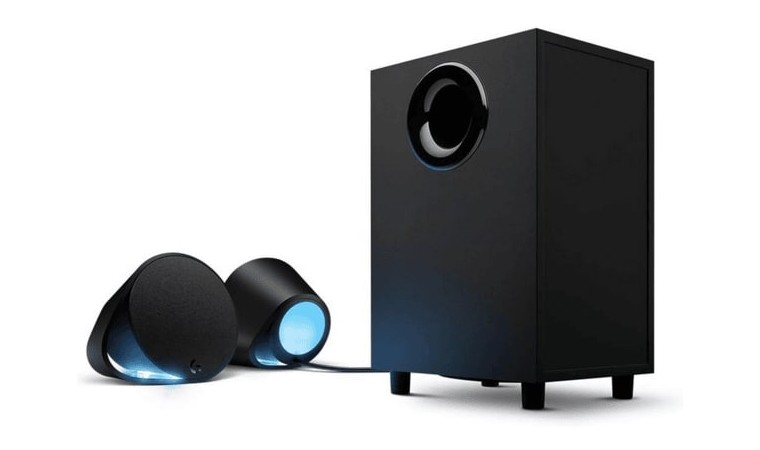
Paired with Logitech’s G560 RGB gaming speakers, you’ll enjoy positional audio and reactive lighting effects that elevate any sim. A great addition to any flight sim setup, and especially useful for those doing flight training, due to the precise positional audio.
LIGHTSPEED Zulu 3 Premium ANR Aviation Headset [Top-Tier Immersion for Serious Flight Sims]
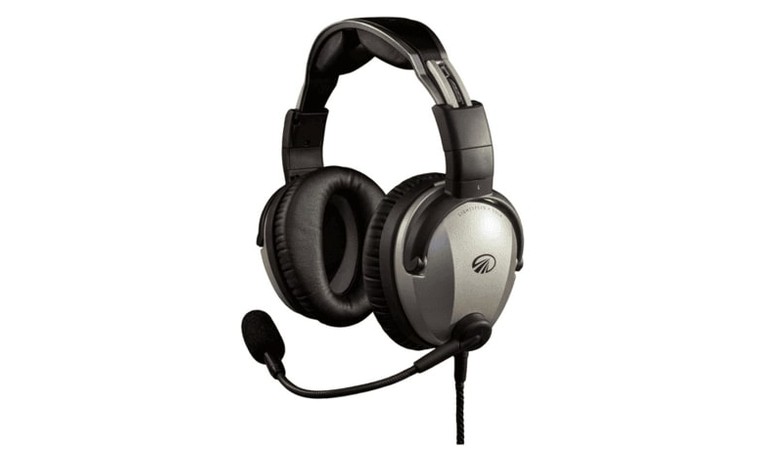
Originally designed for real-world aviation, the LIGHTSPEED Zulu 3 offers unmatched clarity and comfort, with active noise cancellation to block out background distractions. It’s a must have for any student pilot who needs to simulate the real thing. For users who want professional-grade realism and immersive communication, it’s an essential addition to their flight sim setup.
Consider Optional Immersion Upgrades
Once the essentials are in place, optional upgrades can take your experience from great to professional-grade. These extras aren’t necessary to fly, but they add layers of realism, functionality, and educational value that are hard to match.
From tactile switch panels to digital charts and logbooks, these tools help simulate real cockpit procedures. Whether you’re practicing for real-world flight or just want a more structured experience, these upgrades are well worth considering.
Logitech G Pro Flight [Must-Have Entry Panel]
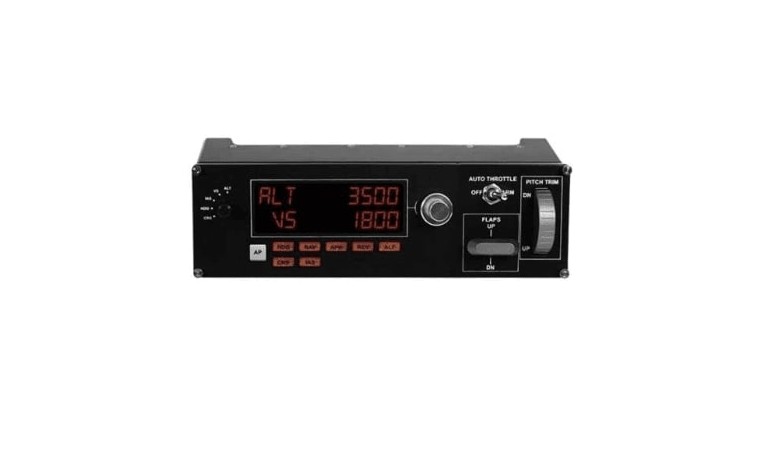
This plug-and-play switch panel adds tactile toggle switches for landing gear, lights, engine start, and more. It’s perfect for enhancing realism and muscle memory, especially during high-pressure moments like takeoff or descent.
Logitech G USB Pro [Best Compact Display Panel for Home Cockpits]
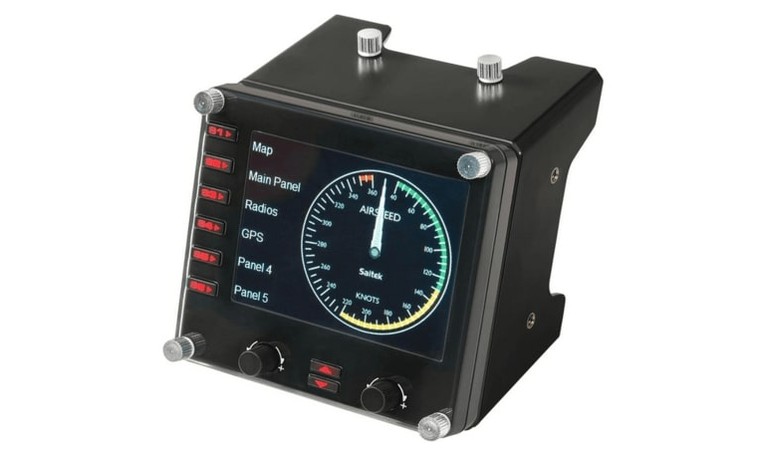
With customizable LCD gauges that mimic real aircraft instruments, this panel helps you monitor vital data like altitude and airspeed at a glance. It’s a great tool for learning IFR navigation or simply decluttering your screen.
ForeFlight (for iOS) or SkyVector for VFR charts [Logbooks & Charts]
ForeFlight offers professional-grade features like flight planning, weather overlays, and logbook management for iPad users. SkyVector is a free resource for desktop users with real-world VFR charts that are perfect for navigating simulated skies.
Hiking 2 Set The Desk Mount [Best Budget Mount for Joysticks & Throttles]
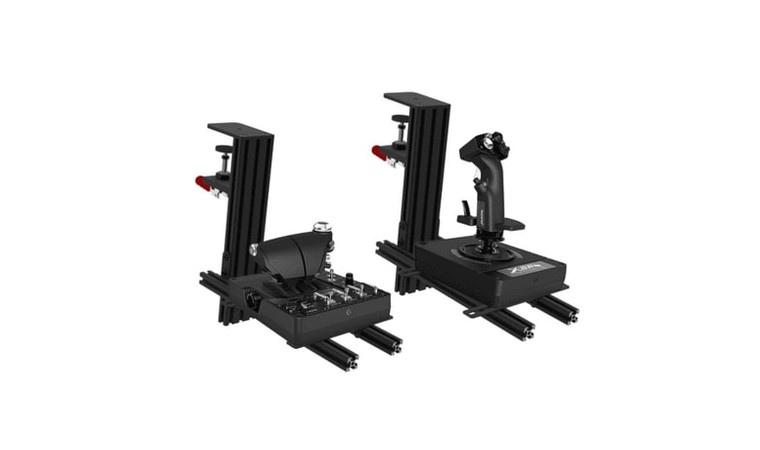
Designed for stability and adjustability, this mount lets you secure your joystick, throttle, and Hotas systems. It is compatible with a vast range of flight sim control systems, including the ones listed in this article. It’s a simple addition that brings a lot of practical value to any setup.
Final Verdict on the Best Flight Simulator Setup
I’ve tested enough rigs and peripherals to know what actually delivers in the cockpit – and what’s just shiny gear that looks good on a desk. If you’re ready to build or upgrade your setup, here’s what I’d recommend for every type of simmer:
For Most Pilots > Microsoft Flight Simulator (2020/2024) + Skytech Blaze 4 Mini – The gold standard for realism and performance. MSFS with the Blaze 4 Mini gives you smooth 1440p visuals, reliable temps, and the best real-world fidelity in the hobby.
For Customization Freaks > X-Plane 12 + Honeycomb Alpha Yoke & Bravo Throttle – The go-to setup for control and realism. X-Plane’s deep flight model and mod scene match perfectly with Honeycomb’s precision hardware. Feels like a real cockpit – because it behaves like one.
For Learners, Students, and Builders > FlightGear + Thrustmaster T-Flight Hotas X – Open source, endlessly tweakable, and ideal for anyone learning flight fundamentals or building on a budget. You can modify every system, experiment, and actually understand how aircraft behave.
For Budget Flyers > Aerofly FS 4 + Thrustmaster TFRP Rudder Pedals – Lightweight, smooth, and easy to run. Aerofly FS 4 gives you great visuals without stressing your PC, while the TFRPs offer solid control at a starter price.
For Full Immersion > Alienware Aurora R16 2025 + Honeycomb Alpha & Bravo + Lightspeed Zulu 3 Headset + Meta Quest 3S – The dream rig. Power, silence, and unmatched clarity. Add the Quest 3S for mixed-reality flying and the Zulu 3 headset for real-cockpit audio – it’s the most immersive setup short of a hangar.
For Builders Expanding Their Rig > Next Level Racing Wheel Stand + Hikig 2-Set Desk Mounts + Logitech G Flight Panels – The foundation for a serious cockpit. Stable mounts, plug-and-play panels, and expansion flexibility. Build here, upgrade forever.
Whatever level you’re at, the rule’s the same: buy gear that adds realism, not clutter. When every switch and control feels true, that’s when your simulator stops being a game and starts feeling like flight.
FAQs
What you need for a flight simulator setup includes a capable PC, flight simulator software, a display, and a flight control system like a joystick or yoke. Optional accessories like rudder pedals, throttle quadrants, and mounting systems can enhance realism and comfort.
The best flight simulator is Microsoft Flight Simulator 2020 due to its unmatched global scenery, real-time weather, and aircraft variety. It’s widely supported, beginner-accessible, and offers cutting-edge realism for hobbyists and aspiring pilots alike.
Microsoft Flight Simulator costs between $59.99 and $109.99, depending on the edition (Standard, Deluxe, or Premium Deluxe). Prices may vary by platform, region, and whether it’s part of a Game Pass subscription.
No, Microsoft Flight Simulator is not available on PS5. It is exclusive to Windows PCs and Xbox Series X|S platforms, with no announced plans for a PlayStation release.
A basic flight simulator setup, including a PC, joystick, and simulator software, can start at around $800- $1000. Full cockpit builds with premium controls, VR, and accessories can exceed $2,000–$3,000 while providing a truly immersive experience.


